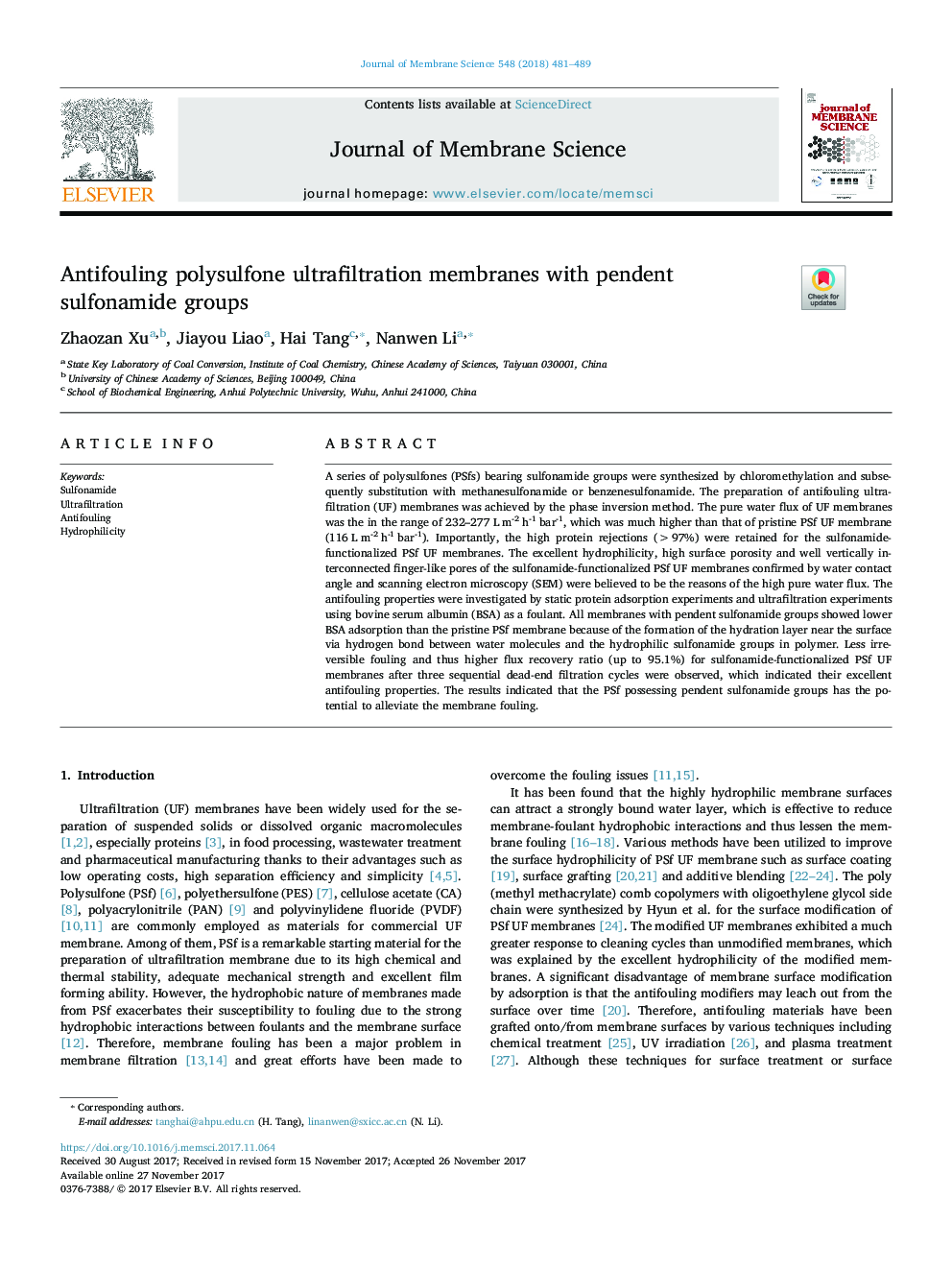| Article ID | Journal | Published Year | Pages | File Type |
|---|---|---|---|---|
| 7020306 | Journal of Membrane Science | 2018 | 9 Pages |
Abstract
A series of polysulfones (PSfs) bearing sulfonamide groups were synthesized by chloromethylation and subsequently substitution with methanesulfonamide or benzenesulfonamide. The preparation of antifouling ultrafiltration (UF) membranes was achieved by the phase inversion method. The pure water flux of UF membranes was the in the range of 232-277Â LÂ m-2Â h-1Â bar-1, which was much higher than that of pristine PSf UF membrane (116Â LÂ m-2Â h-1Â bar-1). Importantly, the high protein rejections (> 97%) were retained for the sulfonamide-functionalized PSf UF membranes. The excellent hydrophilicity, high surface porosity and well vertically interconnected finger-like pores of the sulfonamide-functionalized PSf UF membranes confirmed by water contact angle and scanning electron microscopy (SEM) were believed to be the reasons of the high pure water flux. The antifouling properties were investigated by static protein adsorption experiments and ultrafiltration experiments using bovine serum albumin (BSA) as a foulant. All membranes with pendent sulfonamide groups showed lower BSA adsorption than the pristine PSf membrane because of the formation of the hydration layer near the surface via hydrogen bond between water molecules and the hydrophilic sulfonamide groups in polymer. Less irreversible fouling and thus higher flux recovery ratio (up to 95.1%) for sulfonamide-functionalized PSf UF membranes after three sequential dead-end filtration cycles were observed, which indicated their excellent antifouling properties. The results indicated that the PSf possessing pendent sulfonamide groups has the potential to alleviate the membrane fouling.
Related Topics
Physical Sciences and Engineering
Chemical Engineering
Filtration and Separation
Authors
Zhaozan Xu, Jiayou Liao, Hai Tang, Nanwen Li,
